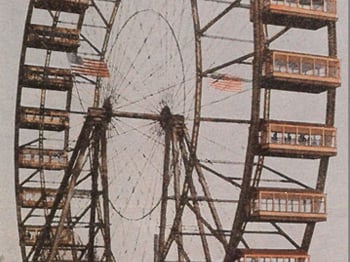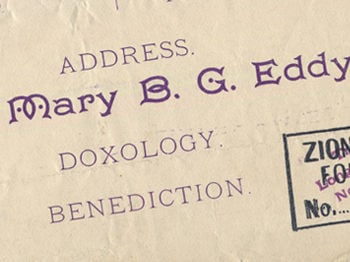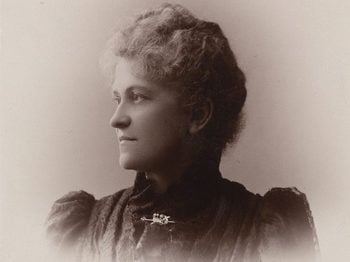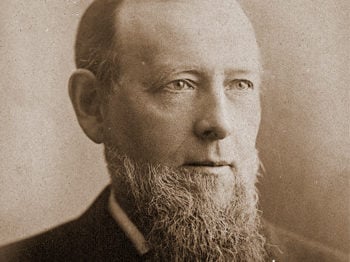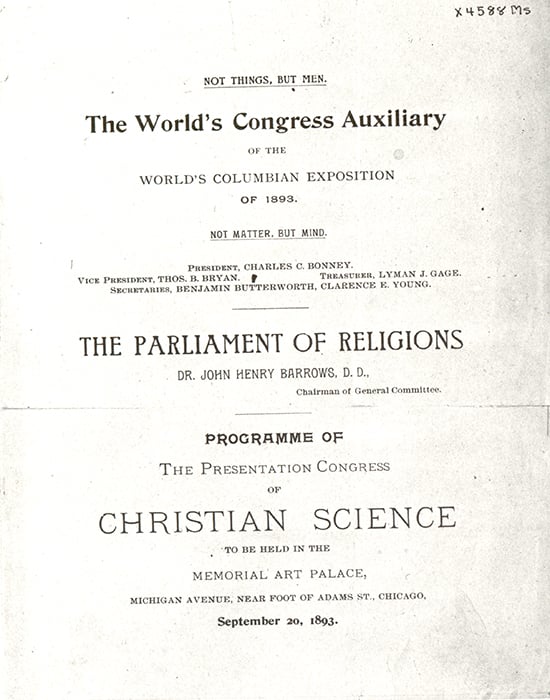
On October 21, 1892 some 686 acres of land in Chicago, including Jackson Park and the adjoining Midway, were dedicated and work begun on facilities for the Columbian Exposition. This World’s Fair of 1893 was designed to commemorate the discovery of America by Columbus, setting forth in a series of congresses a comprehensive display of man’s material progress. Some of the organizers suggested that since the religion of Christ Jesus had led to the chief and noblest developments of civilization, including American liberty, congresses of world religions should have a place alongside congresses of education, art, electricity and so on. The proposal was enthusiastically carried out and when the Congress of many of the world’s’ religions opened September 11 , 1893 the new Columbian Liberty Bell rang out with ten strokes in honor of the ten great occidental and oriental religions represented in the Exposition.
The World’s Parliament of Religions convened for seventeen days, from Monday, September 11, through Wednesday, September 27, and many aspects of the various religions were presented in individual papers. In addition to the Parliament there were congresses held by individual religious denominations.
Christian Scientists, when their religion had been in existence for but 27 years, were assigned the privilege of holding a denominational congress or convention as well as “presenting to the World’s Parliament of Religions an address setting forth the principles of Christian Science.”1 In opening the Christian Science Congress on September 20, 1893, the Hon. Charles Carroll Bonney, President of the World’s Congress Auxiliary and foremost in originating and actively supporting these world conventions, said: “No more striking manifestation of the interposition of Divine Providence in human affairs has come in recent years, than that shown in the raising up of the body of people known as Christian Scientists, who were called to declare the real harmony between religion and science, and to restore the waning faith of many in the verities of the sacred Scriptures.”2
The Christian Science Congress met in the Hall of Washington, at the newly erected Art Palace, later known as The Art Institute of Chicago. Dr. E. J. Foster-Eddy presided and gave the opening address. On the afternoon of September 20, eleven speakers delivered papers presenting various aspects of Christian Science. Of the speakers, two were from Boston, two from Chicago, and one each from Cleveland, Ohio; Detroit, Michigan; New York City and Syracuse, New York; Toronto, Canada; Kansas City, Missouri; and Beatrice, Nebraska.
On September 22 Judge Septimus J. Hanna read Mrs. Eddy’s address “Unity and Christian Science” in the Hall of Columbus, before the Parliament of Religions. On September 19, 20 and 21, Open House was kept in Hall 12. An exhibit of literature was an attractive feature of the fair, and hundreds of items, including The Christian Science Journal, were given away to visitors. A booklet, Answers to Questions Concerning Christian Science, propounded earlier before the Bloomington, Illinois Chautauqua by Edward A. Kimball, was reprinted in condensed form from the Bloomington Daily Bulletin for redistribution at the Congress.
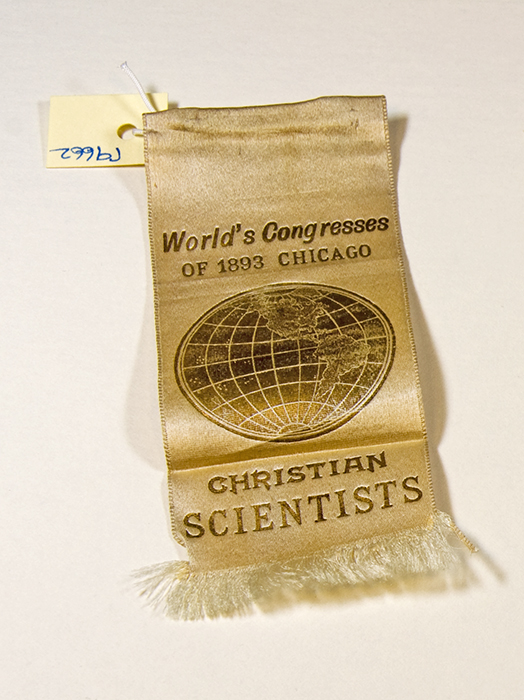
An instance of the far-reaching power of this event is recorded in Volumes XV and XVI of The Christian Science Journal, in which Johannes van Rensburg of Winburg, Orange Free State, South Africa, recounts his experience of reading about the Parliament of Religions in the Review of Reviews and ordering a copy of the two-volume report of the “World’s Parliament of Religions” edited by the Rev. John Henry Barrows. Mr. van Rensburg found Mrs. Eddy’s address, read by Judge Hanna, and thus came to know of Christian Science. In time, he ordered the textbook of Christian Science and became a student of this religion.
In 1893, when the Columbian Exposition was held in Chicago, only ten years had passed since Christian Science had first been introduced into that city by Bradford Sherman and his family. After witnessing a remarkable Christian Science healing in Boston in September 1882, Mr. Sherman returned to his home in Chicago, and he and his wife and son Roger began the healing practice of this new faith in their home at 1006 West Monroe Street. They had received no teaching in preparation for practice, but were guided in their work by the Christian Science textbook, probably the third edition. Requests for help rapidly multiplied and in the summer of 1883 Mrs. Caroline D. Noyes, a friend, came out from Massachusetts to help. Soon thereafter she asked Miss Ellen Brown of Boston to join her. Miss Brown had been living at the Massachusetts Metaphysical College on Columbus Avenue and she shortly returned there to receive Primary instruction from Mrs. Eddy.
In February 1884 Mrs. Noyes and the Shermans had Primary class with Mrs. Eddy in Boston, and in 1885 Miss Brown, Mrs. Noyes, and Bradford and Roger Sherman had Normal class. Mrs. Eddy is said to have called the five workers her “Advance Guard in the West.”
Judge Clifford P. Smith says in his Historical and Biographical Papers, First Series, page 42: “One of the conditions which confronted Mrs. Eddy early in the 1880’s was the danger that Christian Science could not be extended widely, but would be confined to the locality of its origin.” There were many factors leading to Mrs. Eddy’s decision to teach a class in Chicago, but certainly the work of these five students helped to prepare for its occurrence.
Mrs. Eddy arrived in Chicago in May 1884 and began her class of three weeks’ duration on May 13 in a house located at 470 West Randolph Street, corner of Sheldon Street, in what was then an attractive residential area on the west side. Twenty-six students were enrolled, six of them arriving for only the last five meetings. She remained in Chicago for a month and on May 25 gave a public lecture in Hershey Hall with about 400 in attendance.
Among the students of Mrs. Eddy’s 1884 class was Mrs. Mary H. Philbrick of nearby Austin, Illinois. She was a public-spirited woman, active in the Temperance Union and other civic organizations, when she learned of Christian Science and found healing, not only for herself but for her husband and daughter. She studied with Mrs. Eddy and became a teacher, and was soon answering calls from neighboring areas. She traveled widely in Iowa and Minnesota, healing and teaching, and advising and helping students in organizing churches in their respective localities.
Mrs. Philbrick was introduced to Dr. Francis J. Fluno, a practicing homeopathist, who had begun studying the Christian Science textbook. She advised him to go to Mrs. Eddy, which he and Mrs. Fluno did. They studied with Mrs. Eddy and thus began their early fruitful service to the movement, reaching into Kentucky first, and later into California where Dr. Fluno served as healer, pastor, teacher and lecturer.
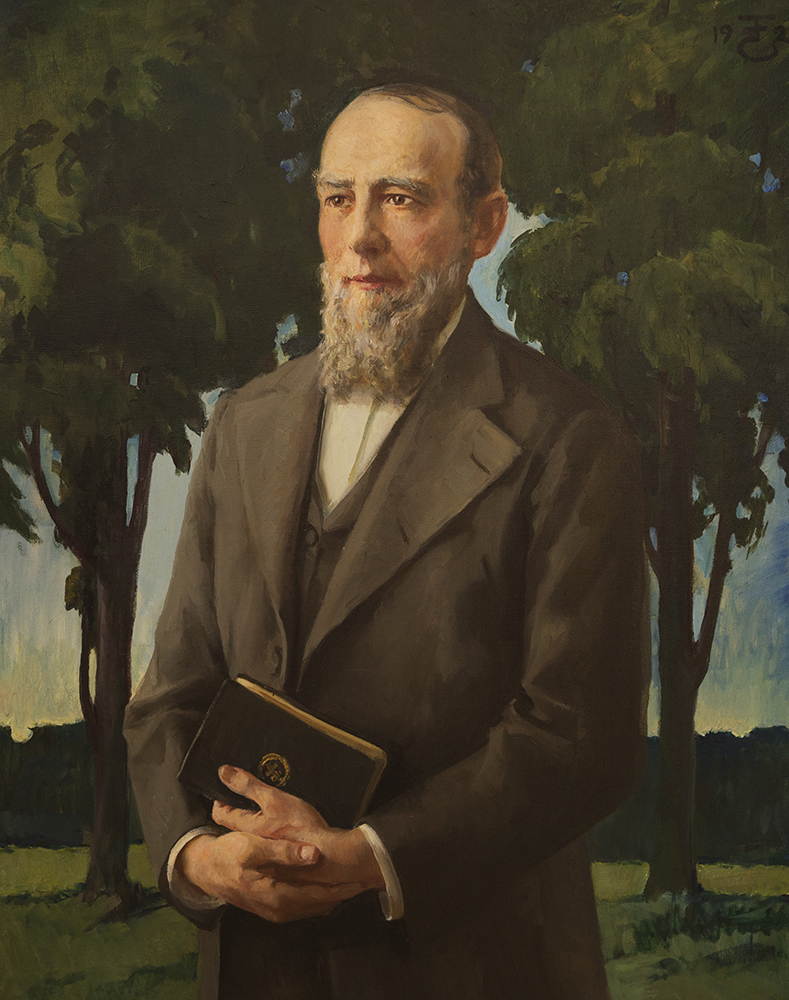
Mrs. Annie M. Knott came to Chicago from England in January 1882, and in 1883 she learned of the effectiveness of Christian Science through a healing of a friend. She had class with Bradford Sherman and later, in 1887 and 1888, attended classes with Mrs. Eddy. She had settled in Detroit in 1885, prepared by her study and earlier demonstrations, to enter into the public practice immediately and to work unremittingly for the Cause of Christian Science in that city until called to work of wider significance in Boston. It was also in 1884 that Sue Ella Bradshaw came to Chicago and was taught by Mrs. Caroline D. Noyes. She returned to California to heal members of her own family. After further study with Mrs. Eddy in Boston she became one of the important contributors to the growth of Christian Science in northern California.
Mrs. Laura Lathrop found healing in Chicago after traveling there from Freeport, Illinois for treatment. She settled in New York and became a teacher.3 Among her students was Mrs. Frances Thurber Seal, whose work in Germany is well known to Christian Scientists.
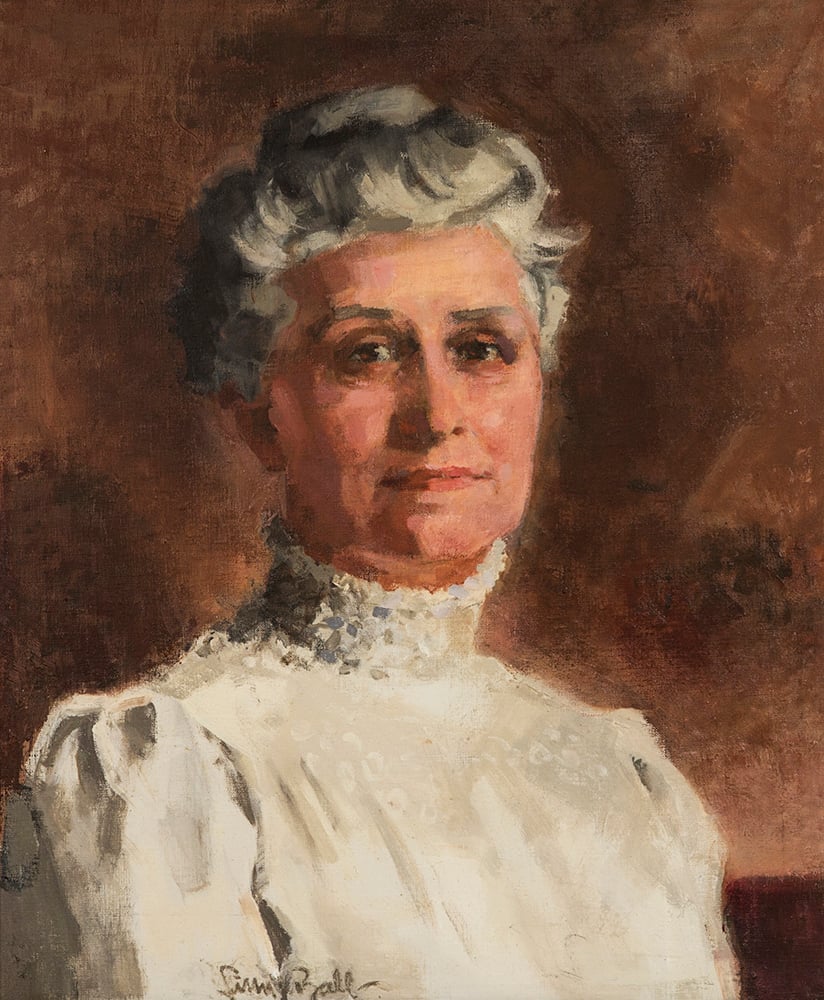
In June 1886 there were eight Normal students of Mrs. Eddy’s in Chicago; at the end of the year there were fourteen, all teaching. At this time teachers were not restricted to their own localities, but could go wherever called, as Mrs. Philbrick was doing. Mrs. Eddy recommended that teachers start Academies, or “Institutes” as they were called — centers where students could meet and consult their teachers, and applicants could seek help. Institutes were usually organized and chartered by a single teacher, or a husband and wife. However, there were some exceptions, one being in the case of Mrs. Mary W. Adams and Mrs. Elizabeth Webster. “The Twins,” as these two students were called by Mrs. Eddy, had studied together from the beginning, attended the same classes with Mrs. Eddy and, finally, they formed the “Adams-Webster” Association. One of their students, Miss Ellen J . Kelly, went to Water Valley, Mississippi and later to Memphis, Tennessee where she became active in the public practice of Christian Science.
In 1887 Mrs. Ruth B. Ewing, Mrs. Martha Bogue, Mrs. Fannie L. Pierce — all to become teachers — joined the Church of Christ, Scientist, in Chicago, which had been incorporated and organized June 13, 1886. Mrs. Bogue, who had come to Chicago from Albion, Michigan became a valuable member, serving the church faithfully and effectively. In 1891 she and Mrs. Ewing, another devoted worker, were elected to conduct the services. Mrs. Ewing had accepted Christian Science after witnessing the spectacular healing of her husband, Judge William G. Ewing. Mrs. Ewing gave one of the papers at the Christian Science Congress in 1893 and over many years was a beloved practitioner and teacher of Christian Science in Chicago. Another individual who received great inspiration from Judge Ewing’s healing was Mary Alice Dayton, the young daughter of close family friends of the Judge’s. It was she who in 1890 wrote a poem, “Potter and Clay” which was published in The Christian Science Journal and later placed in the Christian Science Hymnal as “Eternal Mind the Potter is.”
General Erastus Bates had a distinguished career behind him when he came to Christian Science in the mid-1880’s. At the time he was living in Riverside, Illinois near Chicago and his health had been seriously impaired from war experiences. He had little hope of recovery. His health was restored and soon after he carried the truth which he had joyfully accepted to Cleveland where he visited relatives. Later a niece by marriage came to him bringing her small child on whom a fatal diagnosis had been imposed by physicians. The child was healed and on their return home to Cleveland her family unreservedly acknowledged the power which had brought about this healing. In 1889 General Bates taught the last class held in the Massachusetts Metaphysical College.
An interesting healing, resulting from the work of Mrs. Hannah A. Larminie, a Chicago practitioner, was that of John C. Ryan who was shipping cattle from South Dakota to the Chicago market. Through Mr. Keenan, President of the Chicago Stockyards, he first heard of Christian Science and was directed to Mrs. Larminie for relief from a kidney trouble. On his return to South Dakota he wrote to Mrs. Larminie asking for help. He took the train the next night and on the sleeper he awakened to find himself “as well as could be.” He remained in Chicago two weeks and brought back to South Dakota the textbook of Christian Science and some knowledge of its teaching. He studied with Mrs. Larminie and he and Mrs. Ryan were members of Mrs. Eddy’s March 1889 Primary class. They practiced in Spearfish, South Dakota and held informal church services in their home. Mrs. Eddy asked him to superintend the construction of her son’s house, in Lead which Charles M. Howe was having built at her request. Later the Ryans worked for some years in Denver, Colorado. This city was first introduced to Christian Science through the healing of Mrs. Mary M. Hall, a Denver resident who received her freedom from blindness through the work of Roger Sherman.
The year 1888 was a momentous one for Christian Science in Chicago. The National Christian Scientist Association, meeting at its Third Annual Convention, called much attention to this new religion. Mrs. Eddy, realizing the subversive forces actively at work to undermine the faith of her students and their work, had come to the Convention herself. Her great address, “Science and the Senses,” given extemporaneously in June 1888 in Central Music Hall, was a triumph for the Cause. Healings on this occasion confirmed to an overflowing audience the great power of the words she had spoken. Among those present was one who at once accepted the truth as given by Mrs. Eddy — Archibald McLellan, a successful businessman in Chicago who, heretofore, had been unable to accept Christian Science fully, although his wife had been healed by it.
Mrs. Eddy’s presence in Chicago put the seal of unity, or oneness, on the Chicago field . This strengthened the church which nurtured many able workers who were later to fill positions of trust in the movement in Boston. Serving in the Chicago church developed the talents of Edward A. Kimball, Bicknell Young, Archibald McLellan, Allison V. Stewart, Judge William G. Ewing, and many other early workers.
The pioneer activity in Chicago led to the building and dedication of First Church of Christ, Scientist, Chicago in 1897. The effect of this unity and consecrated work can hardly be overestimated, not only in Chicago itself, but also in many neighboring fields, reaching throughout the West and Northwest.
